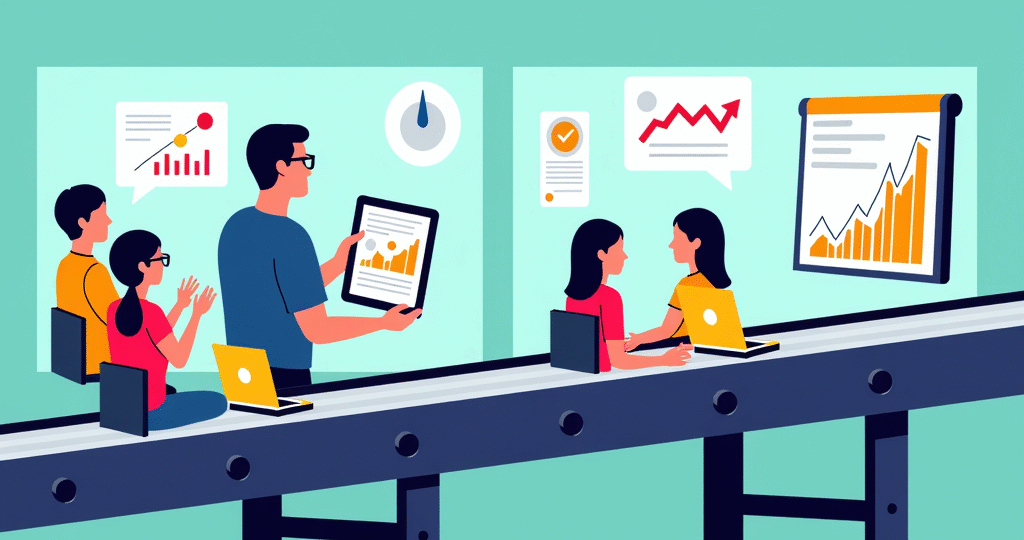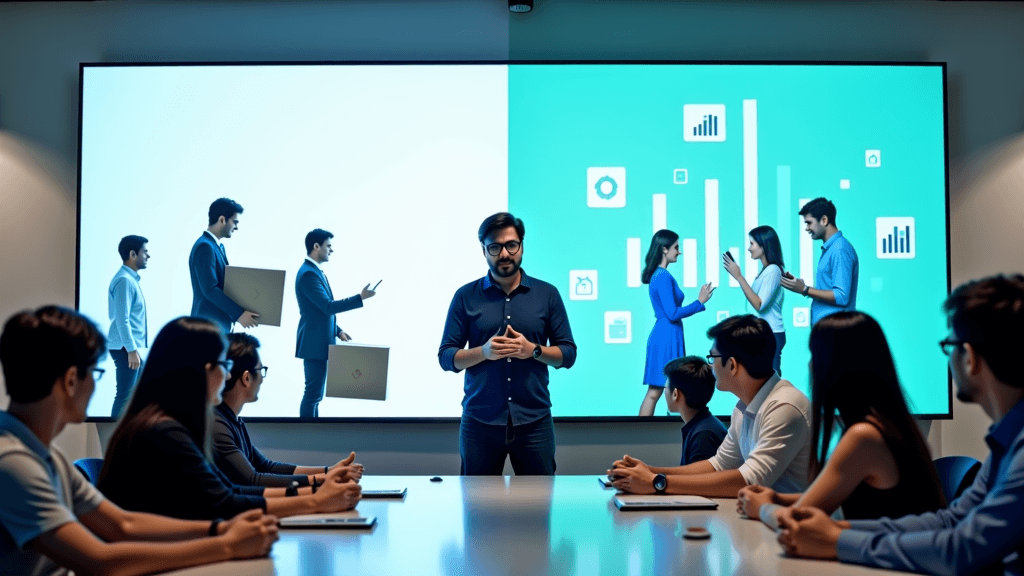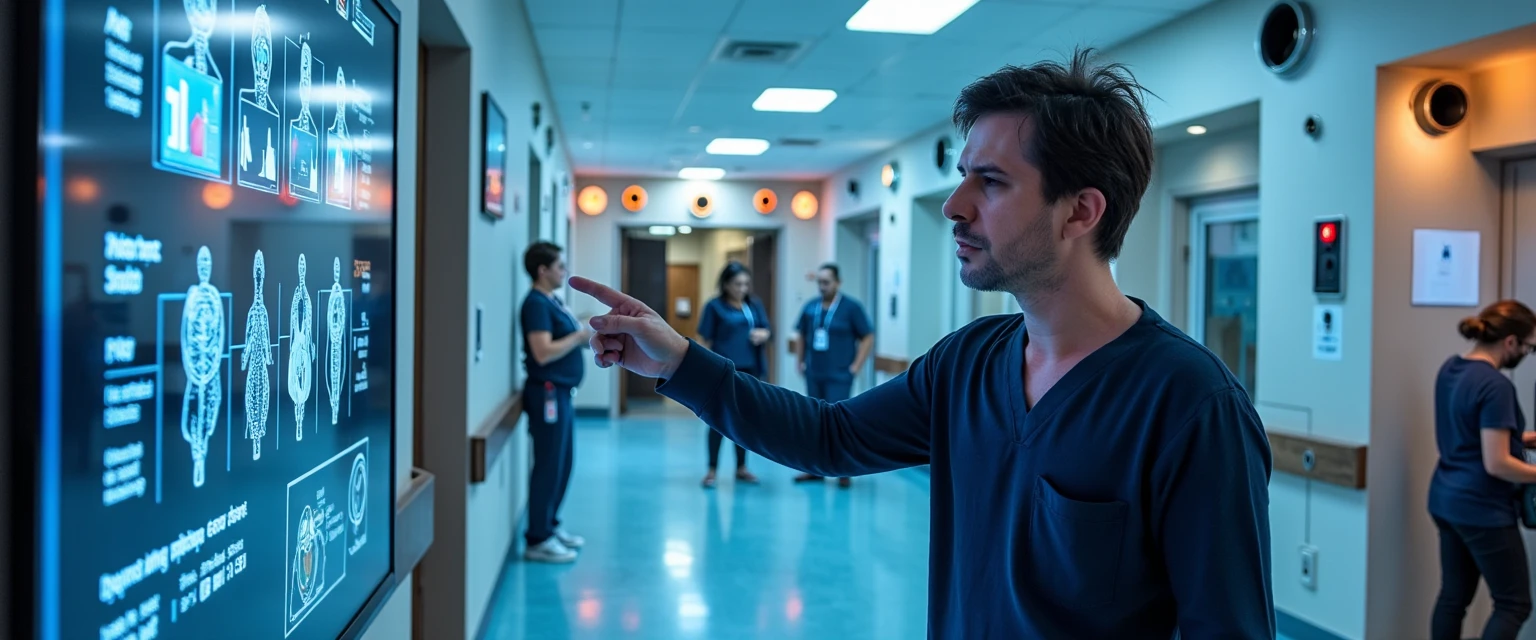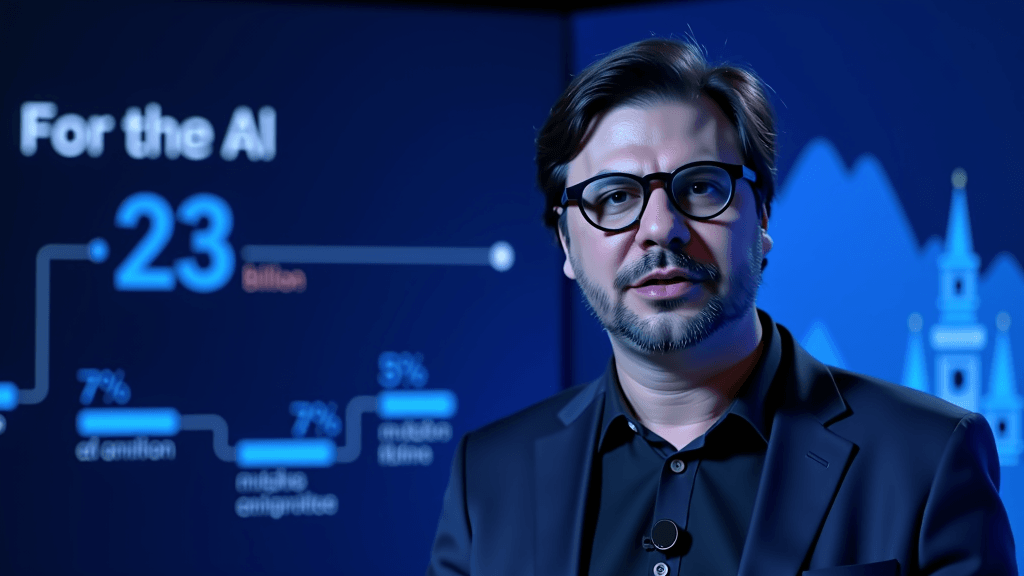Brazilian AI in Numbers: 56% Teachers Lead Global While GDP Grows Only 2.7% - Why This ‘Double Track’ Defines Artificial Intelligence's Most Strategic Moment
October 12, 2025 | by Matos AI

The last 24 hours have brought fascinating data on artificial intelligence in Brazil that, at first glance, seem contradictory. How can we explain the fact that our teachers lead the world in the use of AI (56% versus 36% for the OECD average) while economic projections point to a modest 2.7% growth in GDP by 2030?
The answer lies in what economists are calling the “double wake” of the AI revolution: a rapid transformation in people's daily lives and a slower change in macroeconomic indicators. And today's figures confirm that we are experiencing exactly that.
The Surprising Leadership of Brazilian Teachers
Second OECD survey released today, 56% of Brazilian teachers already use artificial intelligence tools, significantly higher than the 36% of the average of the organization's member countries.
Join my WhatsApp groups! Daily updates with the most relevant news in the AI world and a vibrant community!
- AI for Business: focused on business and strategy.
- AI Builders: with a more technical and hands-on approach.
But what impresses me most is not just the percentage. It's **how** they're using it:
- 77% create lesson plans with AI
- 64% adjust the difficulty of the materials according to the students
- 63% summarize content more efficiently
This is not superficial experimentation. It's strategic adoption to solve real problems in Brazilian education.
Coincidence or not, today it was also announced that the Piauí Artificial Intelligence“ project receives UNESCO King Hamad Bin Isa Al-Khalifa 2025 Award, IA has received international recognition for making it a compulsory subject in primary and secondary schools, reaching more than 90,000 students in 540 schools.
The Paradox of Macroeconomic Numbers
While we see this accelerated adoption in education, the analysis published today in Folha de S.Paulo brings a more complex reality about the economic impact of AI in Brazil.
Brazil's GDP is projected to grow by just 2.7% by 2030, while developed economies should see increases of around 3.2%. Why?
Brazil's structural challenges are real:
- High informality without adequate access to computers and algorithms
- Fragmented legacy systems
- Low domestic savings
- Insufficient training in exact sciences
- Deindustrialization process underway
But here's the crucial insight: even with these limitations, we are leading the way in specific sectors. Our teachers aren't waiting for the perfect infrastructure to start using AI. They are creating solutions within the current possibilities.
The “Double Treadmill” in action
The metaphor of the “two treadmills” mentioned in the Folha study is perfect for understanding the current moment:
Fast treadmill: Transforming work and people's daily lives. Brazil is competitive here, as our teachers and initiatives such as the 15,000 Santander EducaIA scholarships announced yesterday.
Slow treadmill: Macroeconomic results that depend on structural reforms, investments in infrastructure and deeper systemic changes.
In my experience supporting the Brazilian innovation ecosystem, I see that our capacity for adaptation and creativity often overcomes our structural limitations. What the professors are doing is exactly that: finding ways to generate real value with AI, regardless of the systemic obstacles.
The Risks Cannot Be Ignored
While we celebrate these advances, today's news has also brought important warnings. British Standards Institution survey points out that Generation Z is facing an “employment apocalypse” with 31% of organizations preferring AI solutions to fill skills gaps.
Even worse: cases of “deep nudes” continue to increase in Brazil, It also exposes women to serious psychological and digital violence. The technology that liberates can also oppress if it is not properly regulated.
That's why initiatives like public consultation on the responsible use of AI in education, The event, which is open until October 29th, is essential.
The True Competitive Advantage
An article published today in Business Season perfectly captures the moment: “It's not who has the best AI who will lead: it's who knows how to use it to expand people's capacity.”.
Our teachers have understood this instinctively. They are not using AI to replace education, but to empower it. Creating more personalized lesson plans, adjusting content to students' individual needs, summarizing complex information.
This reminds me of projects I've carried out with companies over the years. The ones that benefited most from the digital transformation were not the ones with the best technology, but the ones that best integrated technology with human purpose.
The Moment of Strategic Choices
You Global financial regulators announced today which will increase monitoring of AI due to systemic risks. Meanwhile, companies are already starting to experiment with agentic trade, where digital agents make automated purchases.
Brazil is in a unique position. We have flexibility, creativity and, as our teachers prove, the ability to adapt quickly. But we also have structural challenges that could cause us to lose competitiveness if they are not addressed.
The good news is that initiatives such as strategic seminar on AI in Rio de Janeiro, The event, which will take place on October 16 and 17, shows that there is a coordinated effort to build a national strategy.
Three Lessons from Today's Data
1. Don't expect perfect infrastructure: Our teachers have proven that it is possible to generate real value with AI even in challenging scenarios. Intelligent adoption beats waiting for ideal conditions.
2. Focus on human amplification: The most successful AI applications in Brazil are those that leverage human capabilities, not those that try to replace them completely.
3. Responsible regulation is urgent: Cases like “deep nudes” show that we need regulatory frameworks that protect rights without inhibiting innovation.
What this means for your organization
If you lead a company, startup or organization, today's data brings practical insights:
- Start small, think big: Like the teachers, identify specific problems that AI can solve today, even if the infrastructure isn't perfect
- Invest in training: Brazil's leadership in the educational use of AI is no accident - it's the result of teachers willing to learn and experiment
- Get ready for the “double treadmill”: The practical results of AI will come before the macroeconomic impacts. Use this time advantage
As I always say: in a world where technology changes rapidly, the real competitive advantage lies in the ability to learn and adapt continuously.
And today's figures prove that, in this respect, Brazil has a lot to offer the world.
In my executive mentoring, I help leaders and organizations navigate exactly this “double treadmill” of AI, developing strategies that generate practical results while building capabilities for the future. If your organization wants to accelerate the responsible adoption of AI, let's talk.
✨Did you like it? You can sign up to receive 10K Digital's newsletters in your email, curated by me, with the best content about AI and business.
➡️ Join the 10K Community here
RELATED POSTS
View all



